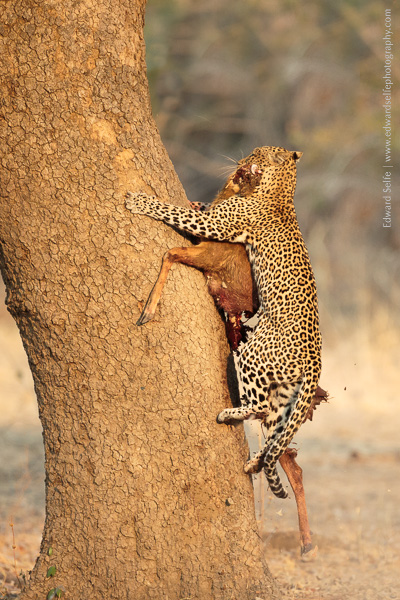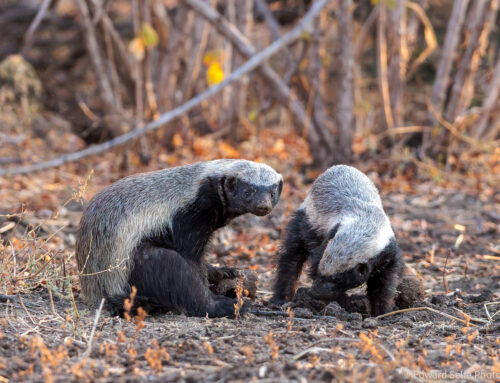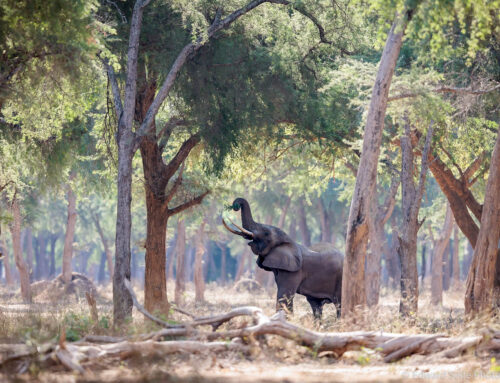I occasionally run private safaris for individual photographers hoping to enjoy the best chance of working on their skills. Africa Geographic Travel have recently arranged two such safaris with me, based in the fantastic Nsefu Sector of the South Luangwa National Park.
Philip Theo and I have been in touch for some months, and I knew from our first emails that we were going to have a great trip. It was immediately clear to me that he is a wildlife guy as well as a photographer and would relish the chance to be in the bush as much as the opportunity to get some excellent images.
Late September is a stunning time in the Luangwa, with very little standing water beyond the boundaries of the drying river. This concentrates game along the remaining water ways, often causing interactions and social compression that we do not see at other times of the year. So it was this week; we enjoyed interactions between lions and hyaenas as well as leopard, hyaena and a pair of fish-eagles! Thank you for reading my blog and I hope you enjoy the report from this safari.
On our first morning safari, we returned to a lion kill which we had been observing at the end of my previous safari. We found that the lions were still guarding the buffalo carcass, even if they had very full stomachs and could barely force another morsel down their throats. Such is the natural instinct to protect the resources which you rely on for survival. However, eventually, the lions moved away and the hyaenas wasted not a moment before rushing in to claim the leftovers. This video gives some indication of the drama of the situation!
The hyaenas took very little time to shred the carcass and spread it across the surrounding area including the bones, skin, skull and remaining soft tissues that the lions had not consumed. In the soft morning light, we decided to shoot against the sun to create backlit images.
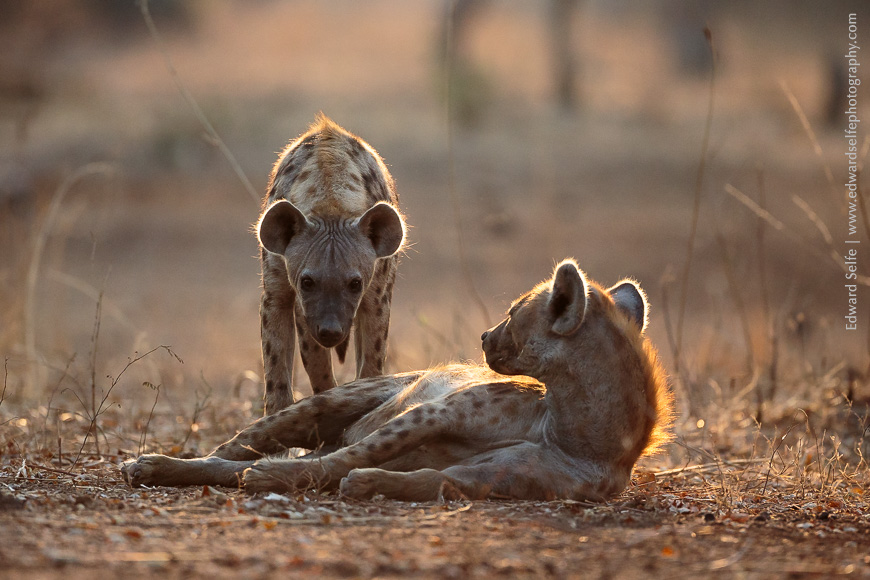
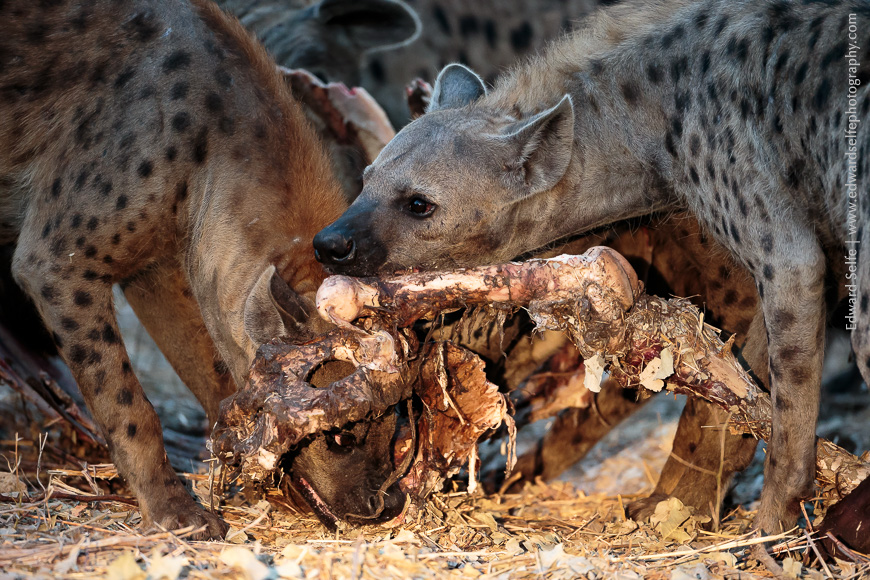
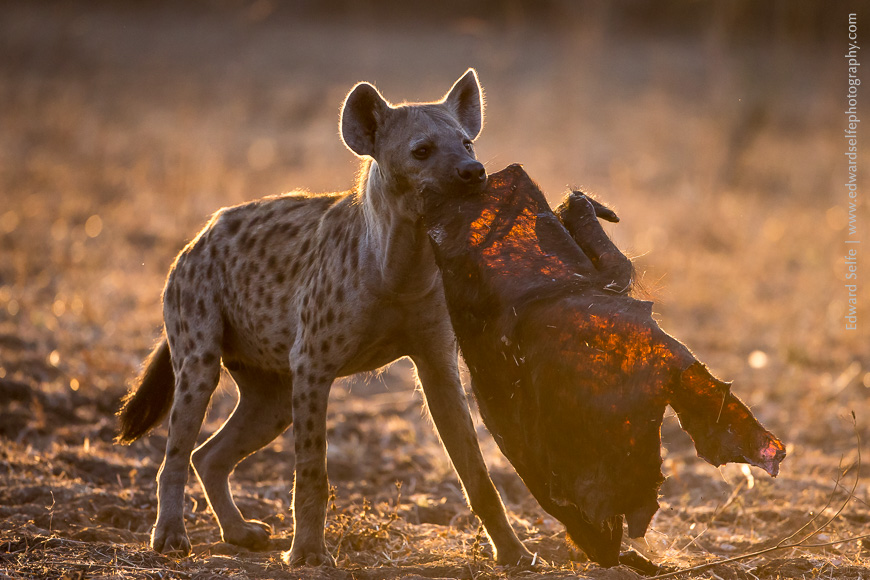
At one stage, several hyaenas ran off into the distance, making me wonder if they had heard of another kill nearby, perhaps by wild dogs. We moved off to follow them, but found only a puku who was looking stunning in the interlocking bends of the Kauluzi stream. Switching to B&W mode, we composed beautiful images as he watched the hyaenas passing by.
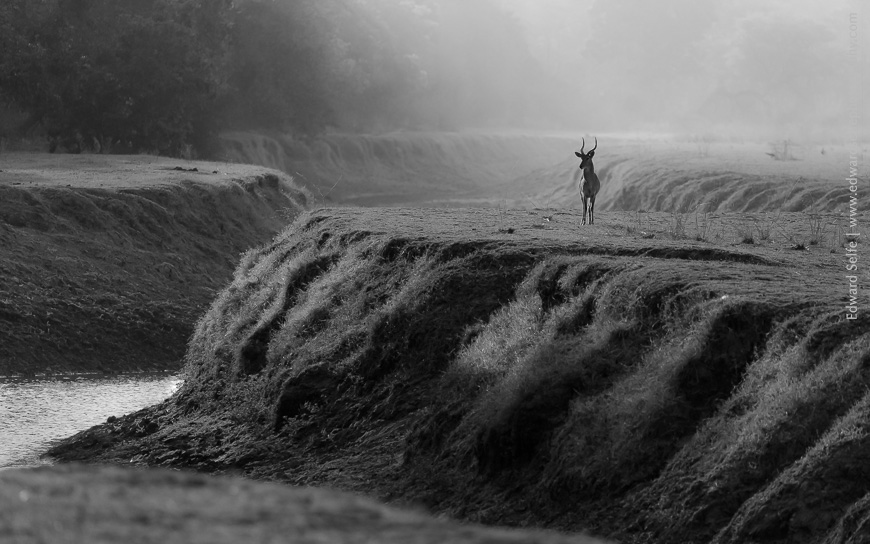
The dry conditions bring together lots of sightings in the zone along the river, often requiring very little travelling to see a wide variety of game. In the ebony woodlands, we found elephants enjoying the shade and hoovering up the fallen leaves of the ebony trees. We also enjoyed a giraffe who crossed the river, and then panicked, deciding that the other side was better after all!
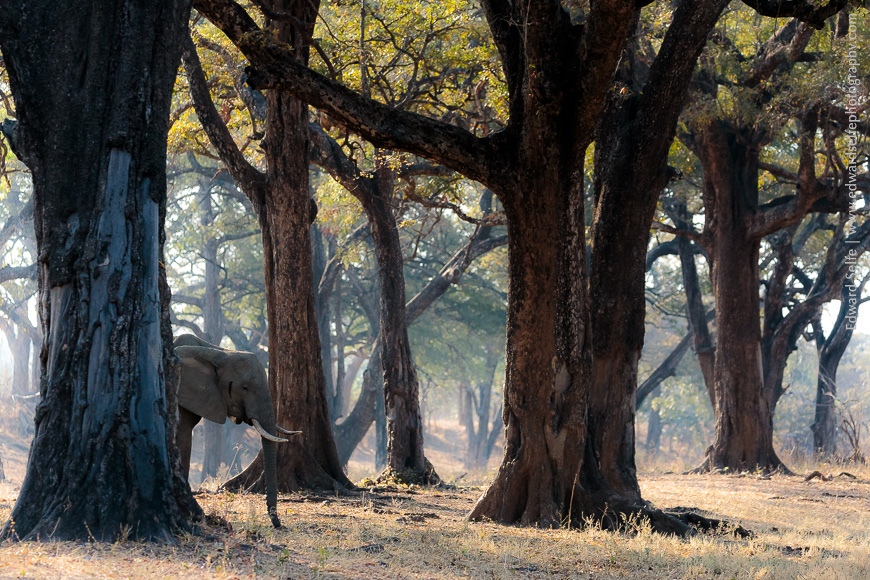
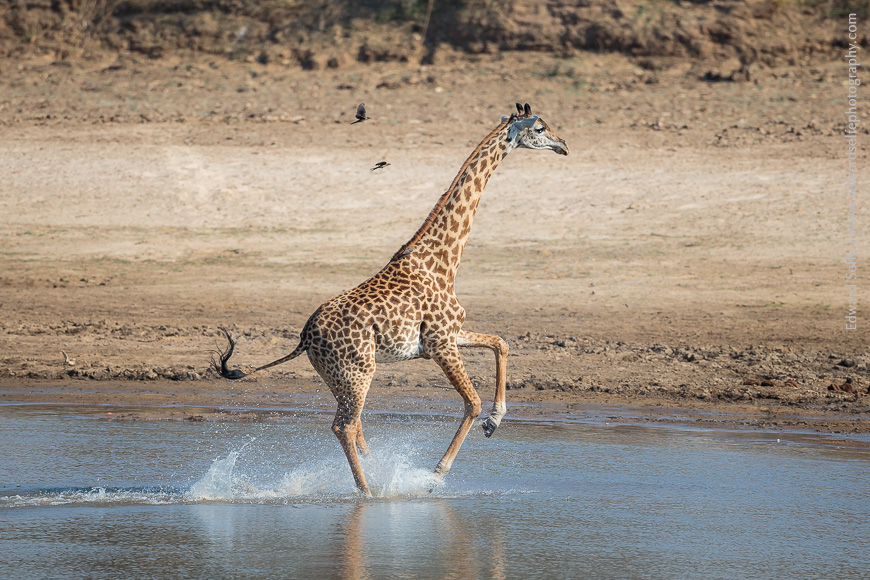
Sausage trees are a mecca for lots of game at this time of year…the fresh buds, soft flowers and tender fruits attract giraffe, buffalo, puku, bushbuck, impala, elephants, baboons, monkeys, squirrels and birds. And of course, leopards have learned that lounging in the boughs of such a tree will likely lead to an easy meal!
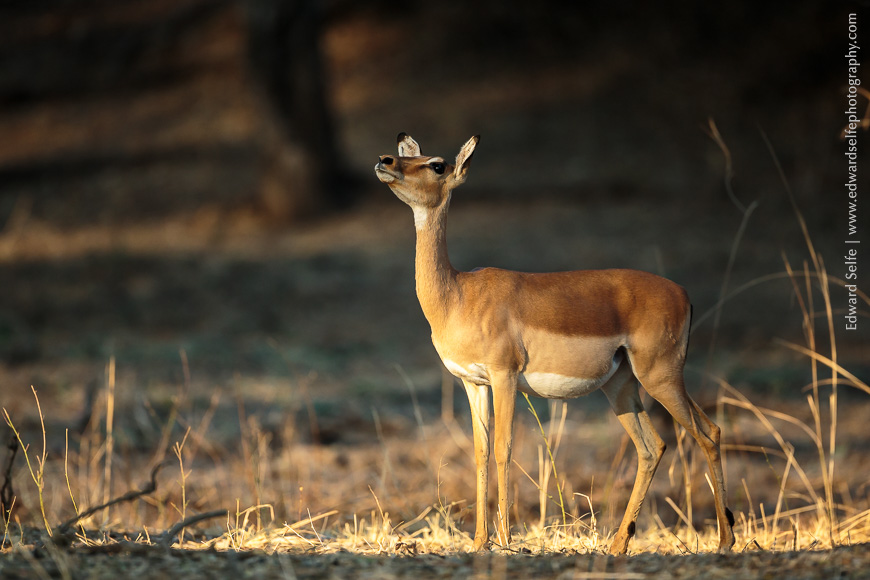
A newly-formed pack of wild-dogs has been seen regularly in the Nsefu Sector. Numbering 5 – with no pups – they are free to roam around the prime areas of the park without having to return to a den each day. They hunt and feed twice a day, making them a great pack to follow!
We found them one afternoon, still with full bellies from the morning’s feed. They didn’t become active until after sunset, but we were able to photograph them on the bluff where they were resting. Many animals choose to rest on the edge of bluffs/banks at this time of year to benefit from the breeze.
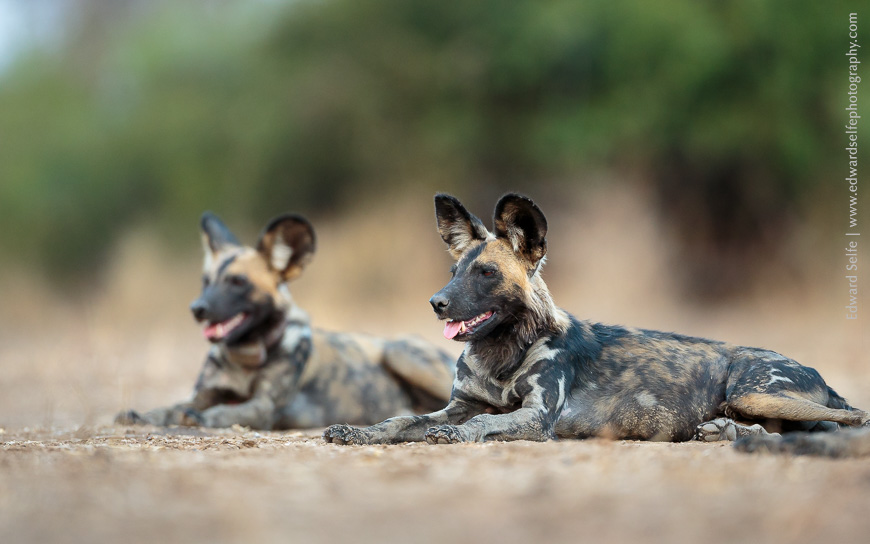
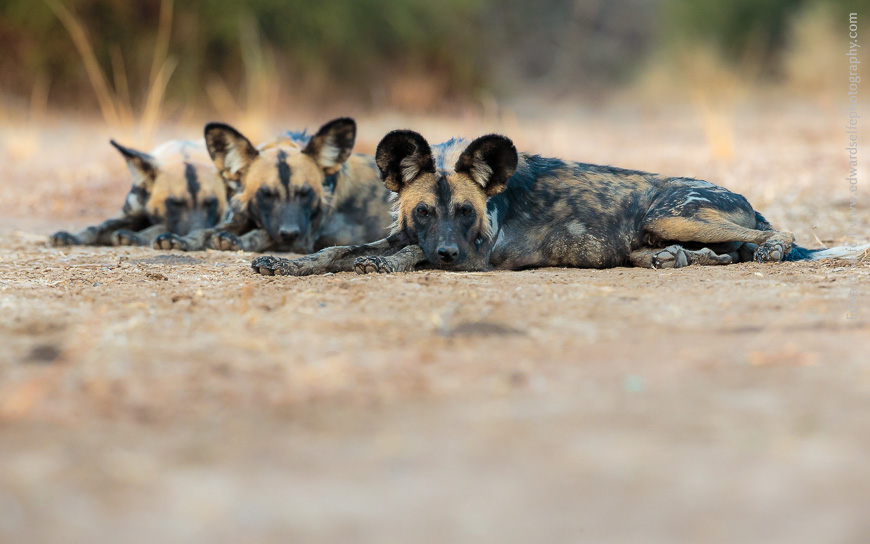
We had heard that very young lion cubs had been seen with one of the prides recently. Following tracks we located 4 youngsters in a remote back-country gully along the Kauluzi stream. It was amazing to see how innocent and vulnerable they were; they showed no concern about our (very careful) approach and barely flinched when we shone the edge of the spotlight on them to take some quick photos. There was a herd of buffalo nearby, and I could hear hyaenas in the distance; with no sign of the cubs’ mother, I was concerned about drawing attention to the area, so we moved on after a short time.
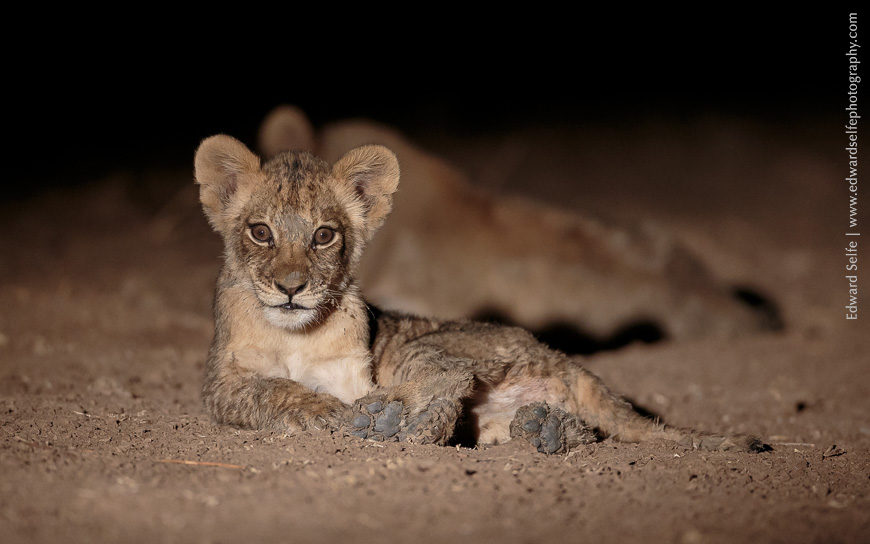
We returned in the morning but there wasn’t any sign of the cubs – only tracks to show that the buffalo herd had been through. I was worried that they might have driven the cubs into the dry channel, but another guide found the cubs elsewhere later in the week so their mother must have come to the rescue!
After leaving the area we’d found the cubs, we spotted 3 of our big 4 in very quick succession! The buffalo were still nearby, although hidden by the bushes, and a sub-adult male lion was basking in the sun…..until he was moved on by a couple of bull elephants who strolled towards him. It was clear from their ‘bouncy’ walk that they had picked up his scent and were planning to remind him who is really the king of the bush!
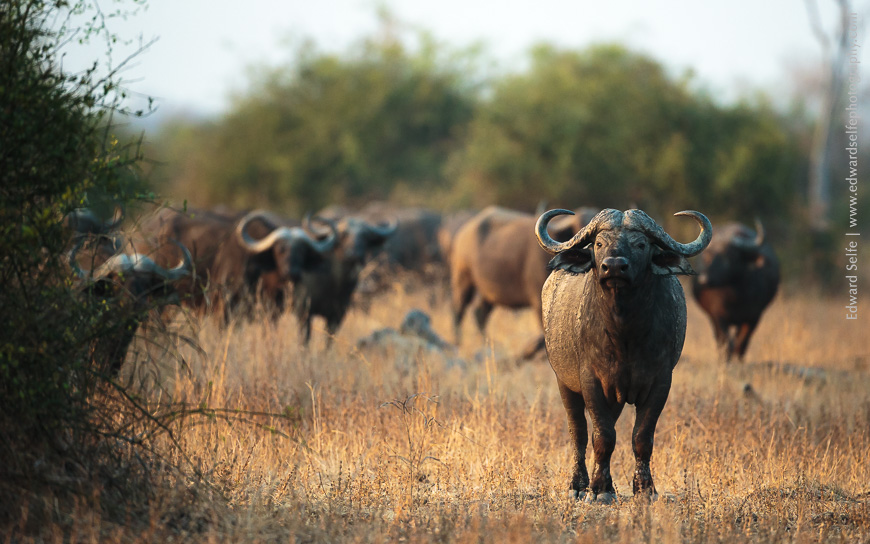
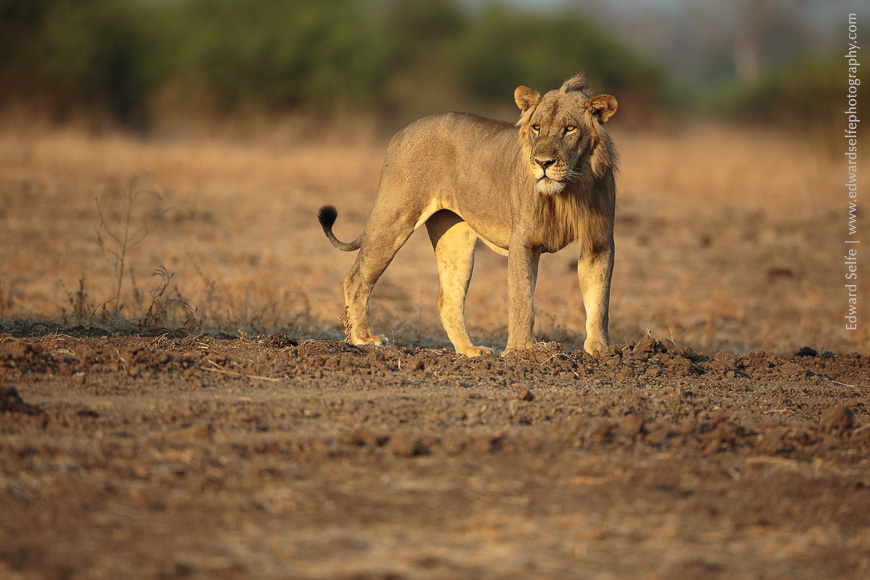
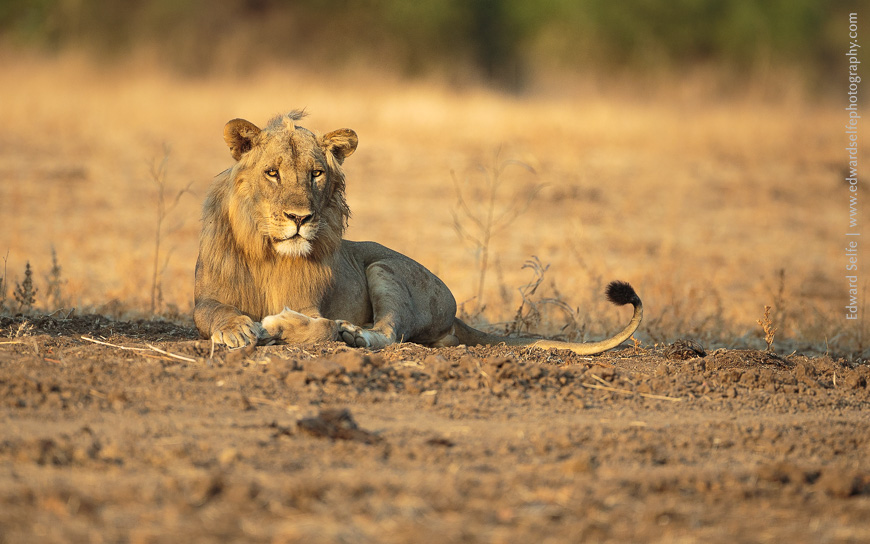
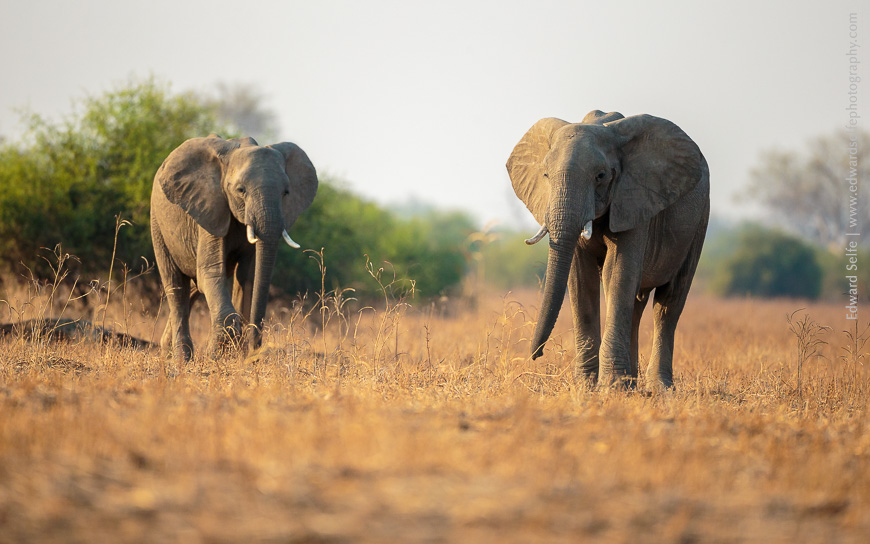
Heading out early in the afternoon, we planned to explore further north in the Nsefu Sector. We passed the elephants’ favourite crossing point…..
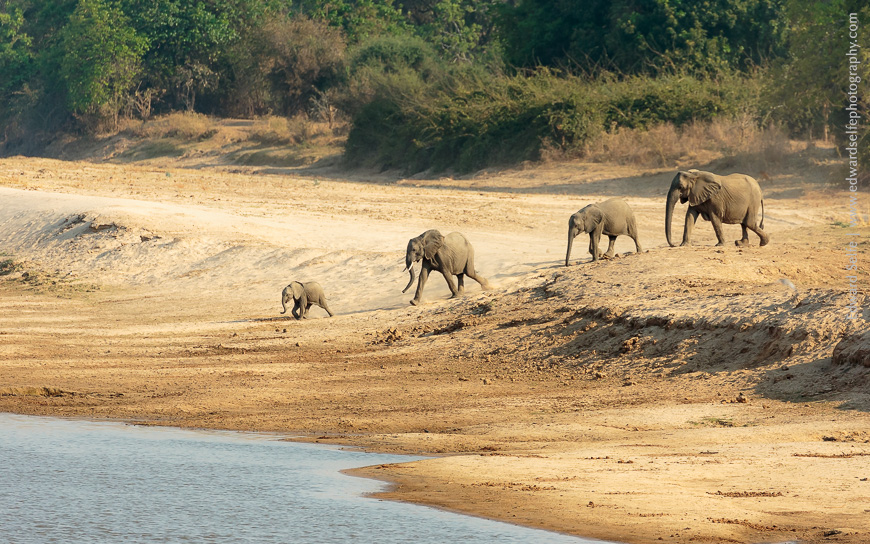
Arriving at my planned area, we quickly found that something was up. The antelope looked very spooky and we soon located a leopard who was feeding on an impala in the bottom of a bush. She was deep in the bush, and we wondered if we’d get a good view….when a lioness arrived stole the carcass from her! The leopard didn’t hang around, knowing the risks of being caught by the larger cat, and launched into a tree, where she watched dejectedly.
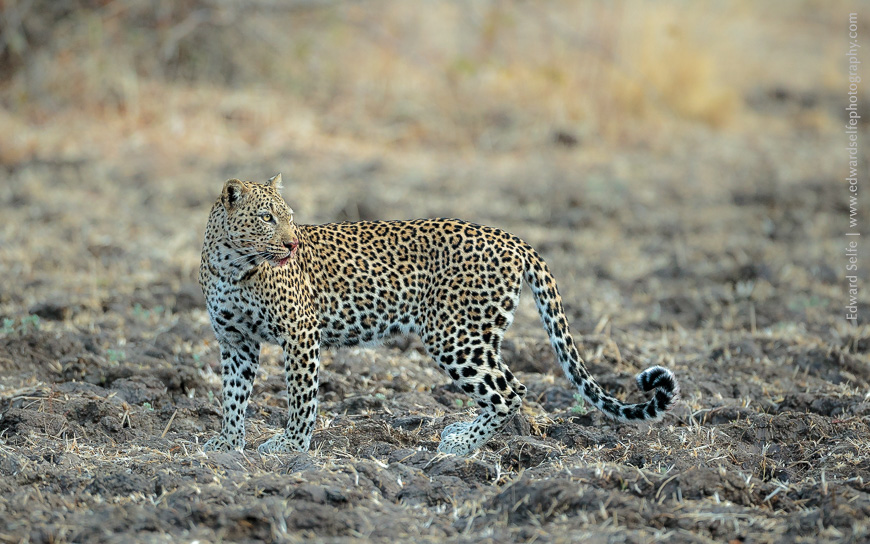
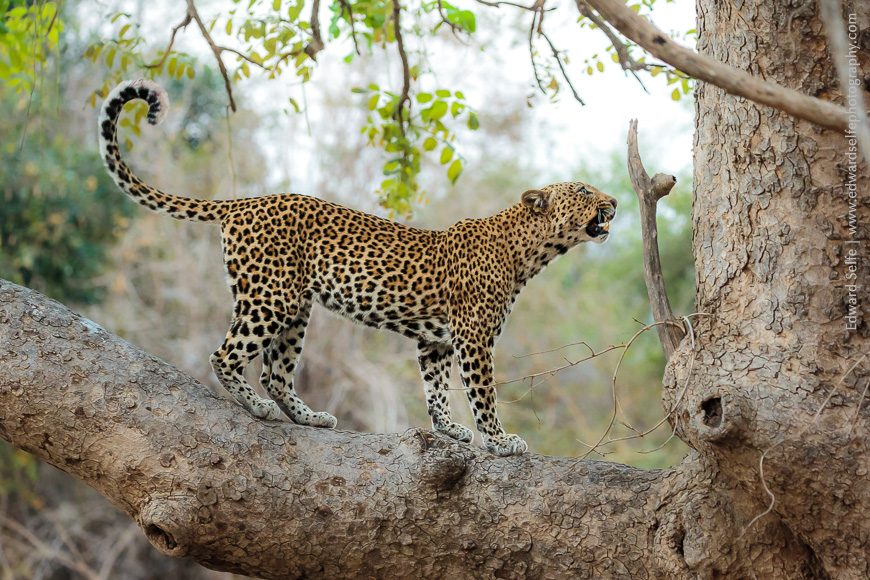
Amazingly, a few hundred meters away, another leopard was resting in a sausage tree, with the most magic golden light hitting the branch under her and reflecting on to her face and flank!
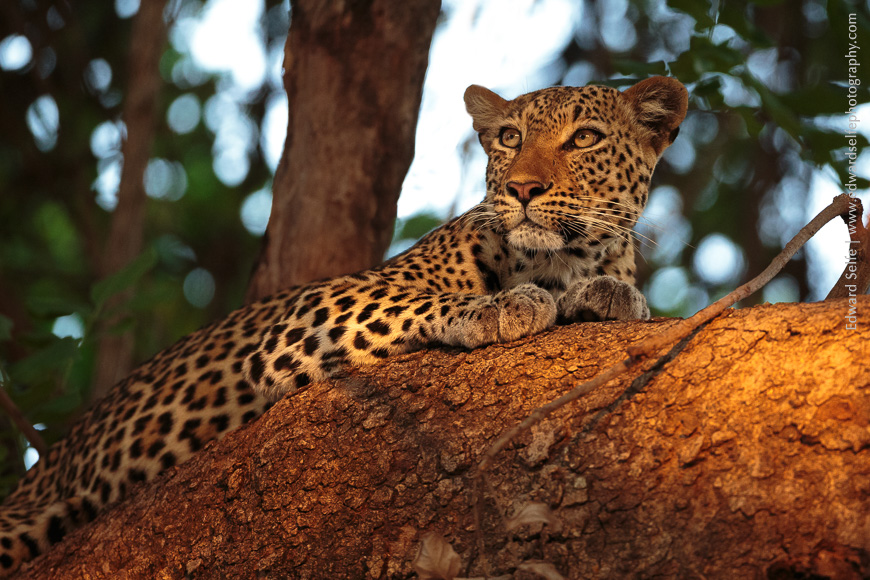
After all this drama – surely the sightings of the trip? – we decided to visit the beautiful salt pans in the centre of the park. On arrival, we got fleeting views of a serval and a honey badger carrying a cub in her mouth, but thereafter the area was uncharacteristically quiet. However, we waited around and were rewarded with a group of 11 buffalo coming to drink in the clear water at the source of the spring.
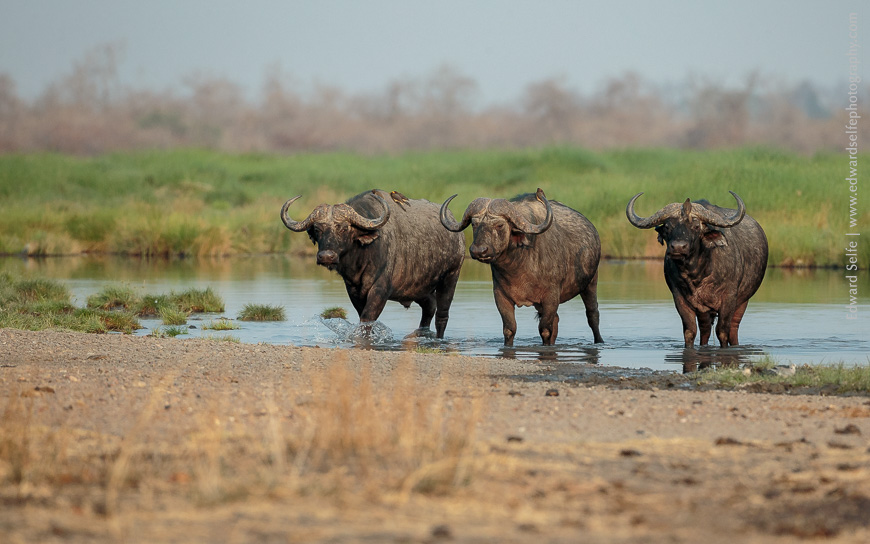
The following morning – we had spent the afternoon safari with the Carmine bee-eaters – we decided to go in search of leopard once again. Leaving early and stopping regularly, we picked up the call of a puku and headed to the area to check. An amazing sight greeted us. A hyaena was feeding on a puku carcass on the ground, and a leopard was watching from a nearby tree! Clearly, the leopard had killed the antelope, and then lost it to the large scavenger before she’d had a chance to drag it into a tree!
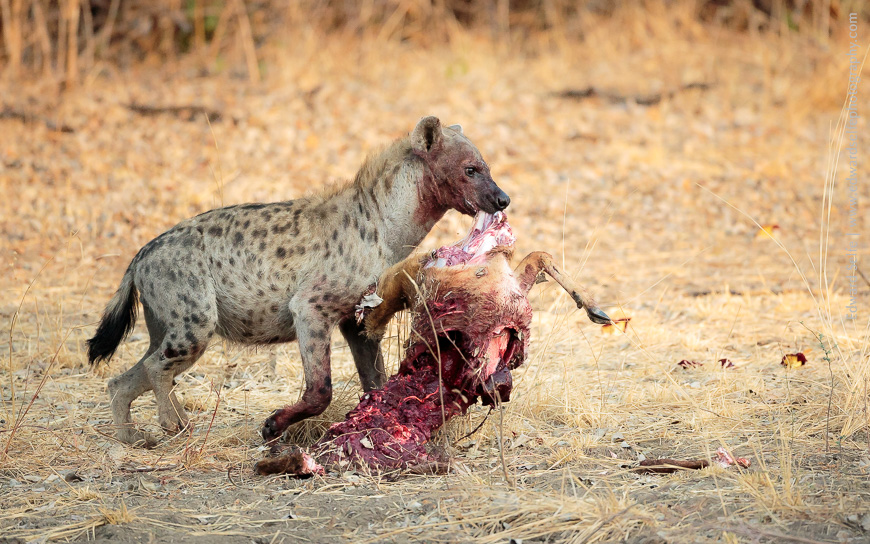
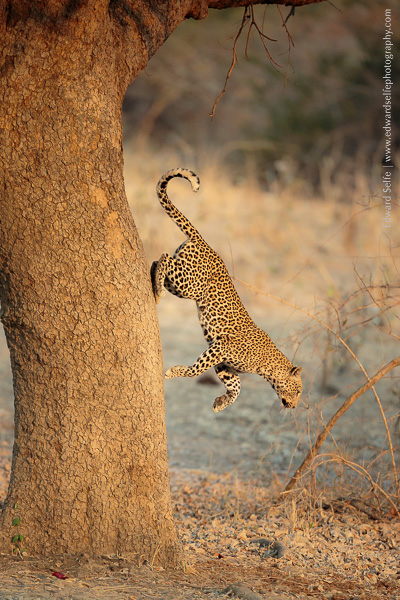
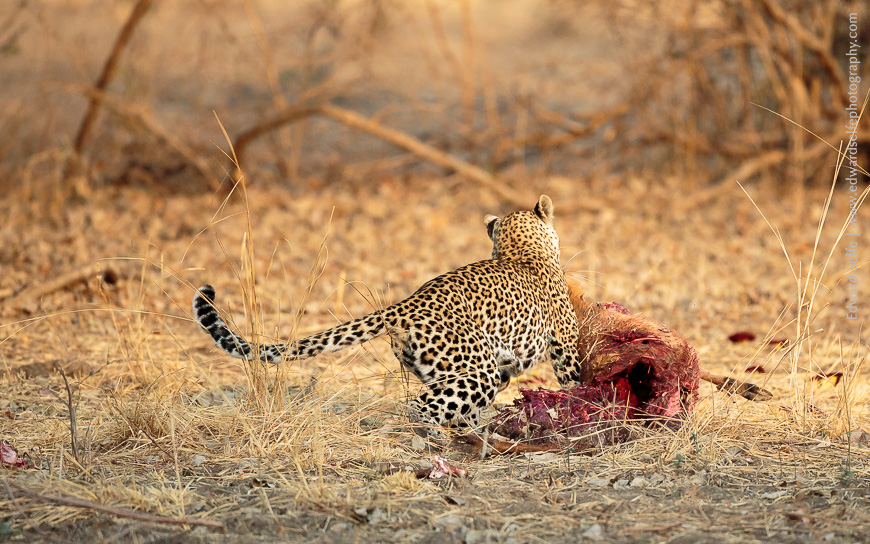

In the safety and concealment of the low branches, she then gave us a lesson in puku anatomy, pulling out the diaphragm, followed by the heart and finally the lungs. Their rich red colour proves the antelope had been killed only very recently!
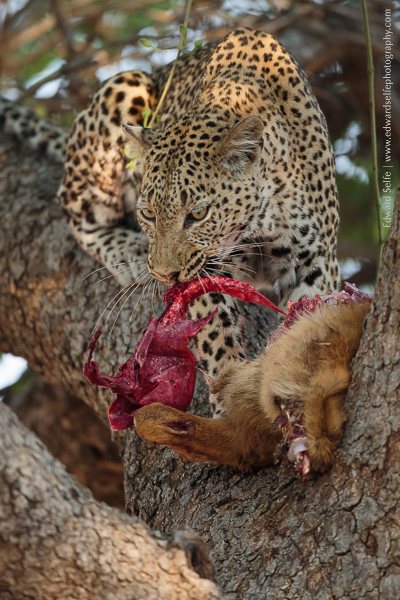
At one point, she looked up nervously and we followed her gaze. She had spotted the approach of a large male leopard nearby. She climbed to a higher branch to view him better and then descended the tree. Perhaps she was nervous to be isolated in the tree with the large male below? Leopards are highly anti-social cats and interaction between individuals is kept to mating pairs and cubs if at all possible!
It’s hard to follow such a sighting, so we moved off to the riverbank to have a coffee break! On the way, we found some baboons playing on an overhanging tree root system and enjoyed photographing them against the light.
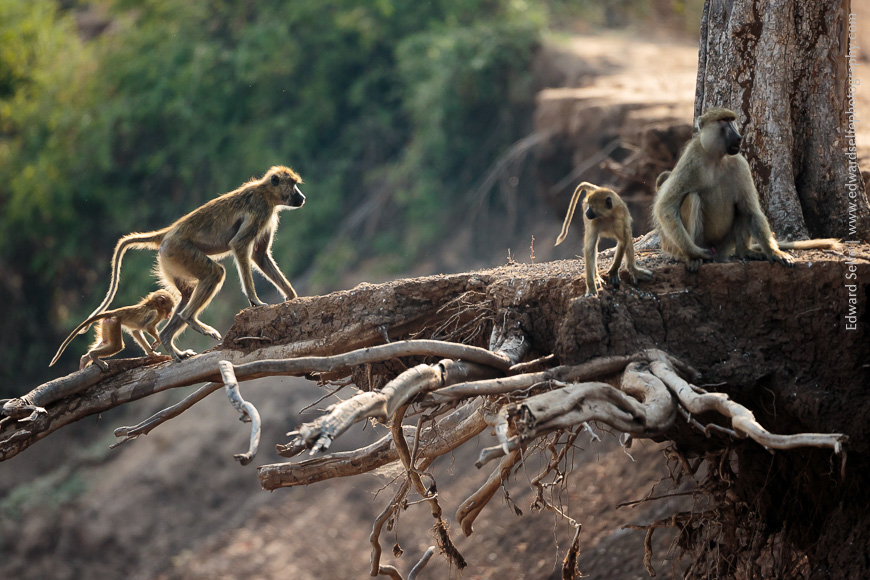
Not surprisingly, the final day could not quite match up to the drama and excitement of the previous morning. However, we played with new techniques, including panning blur….
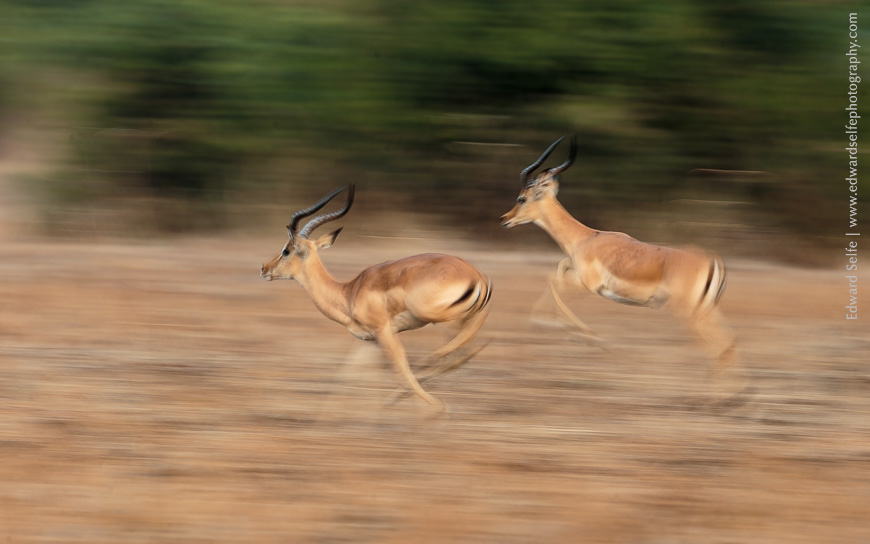
We also got my favourite photo of the trip; a White-fronted bee-eater offset by the purple flowers of a veronia shrub. I love the soft colours.
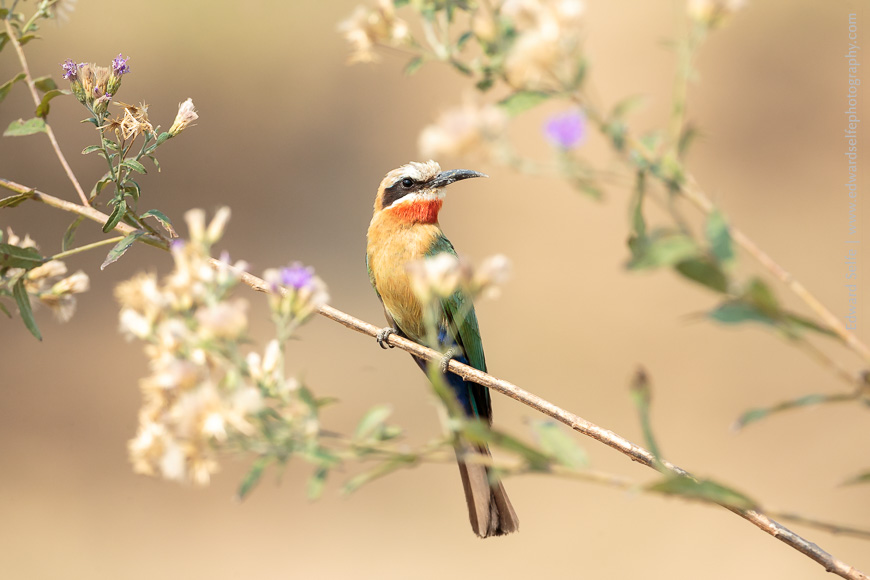
When we thought it was all over, Lunagwa offered us one more gem. A brand-new minutes-old puku calf which was still covered in after-birth. We took care not to go too close, but were still able to get some nice photos….and just enjoy the start of a new life in the bush.
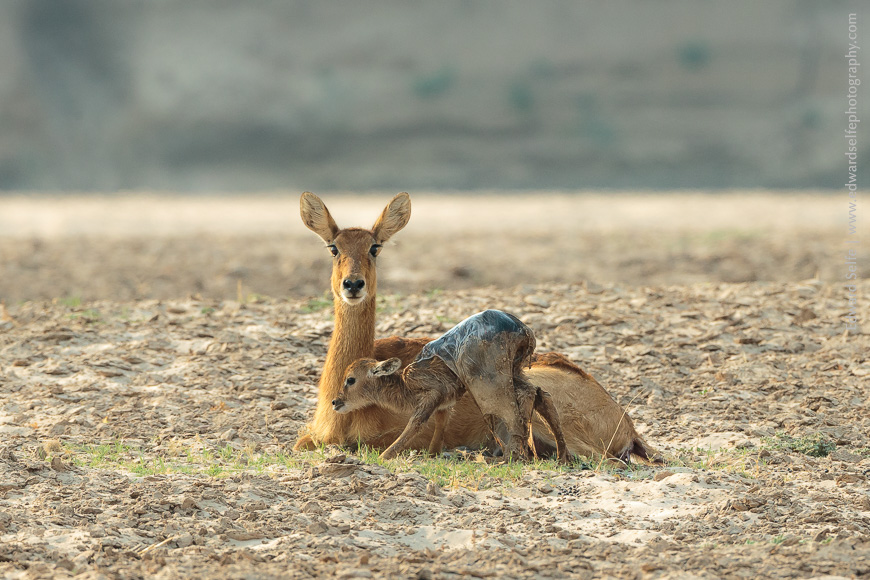
Philip’s approach to the bush – the genuine belief that no sighting is a given and everything is a bonus – served him very well in Luangwa. Very often we find the best sightings when we stop to watch the smaller events, and hear a sound that leads us elsewhere. It was a pleasure guiding him in the Luangwa, and I hope to see him again one day.
If this whets your appetite for a serene bush experience of your own, there are lots of ways to do so. Send me an email via the contact page, or contact Africa Geographic Travel and we’ll be happy to put something together for you. Whether a group trip, or a private safari, we have options that can be tailored to your needs. Thanks for taking the time to read this report.

